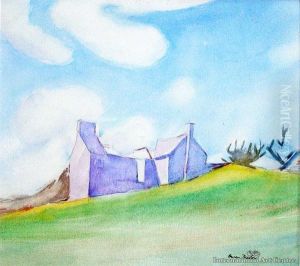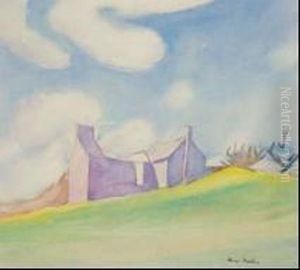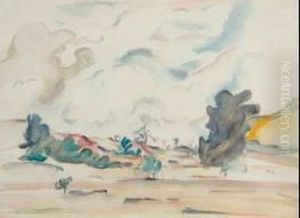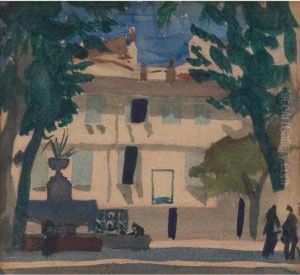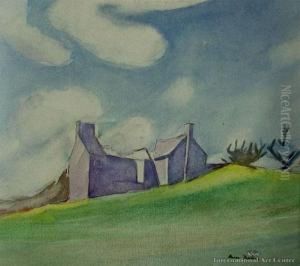Owen Merton Paintings
Owen Merton was a New Zealand-born artist known for his landscape paintings and his connection to the world of literature through his son, the renowned writer and Trappist monk Thomas Merton. Born on December 29, 1887, in Christchurch, New Zealand, Owen Heathcote Grierson Merton developed an early interest in art, which became the defining passion of his life.
Merton's artistic career was shaped by his travels and the influences he absorbed along the way. He moved to the United States in the early 20th century and studied at the Art Students League in New York City. This experience exposed him to a range of artistic styles and techniques, as well as the vibrant cultural scene of the time. He later relocated to France, which had a profound impact on his work. The French landscape, the light, and the artistic community he found there deeply influenced his approach to painting.
Despite not achieving widespread fame as an artist during his lifetime, Owen Merton was a dedicated painter, and his works were characterized by a quiet, contemplative beauty and a strong sense of place. His landscapes often reflected a serene and harmonious relationship with nature, a theme that resonated with his son Thomas's spiritual writings.
Owen Merton married Ruth Jenkins, an American, and together they had two children, one of whom was Thomas Merton. Tragically, Merton's wife died of stomach cancer in 1921, and he struggled with the responsibilities of single parenthood. The care of the children was eventually split, with Thomas living with his maternal grandparents in the United States, while his brother, John Paul, stayed with Owen.
Owen Merton continued to paint throughout his life, but his career was cut short when he died on January 13, 1931, in Flushing, New York, after a brief illness. Although his artistic legacy is not as well-known as that of some of his contemporaries, his work is appreciated for its contribution to early 20th-century landscape painting and for the insight it provides into the environment that shaped one of the 20th century's most significant spiritual writers, his son Thomas Merton.
